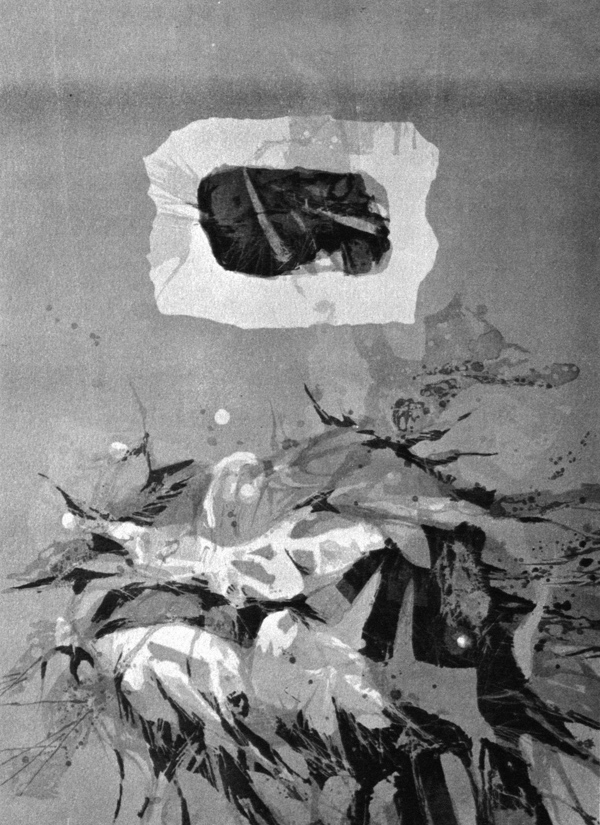Editor of this issue: Thomas Remeikis
Copyright © 1965 LITUANUS Foundation, Inc.

|
LITUANUS
LITHUANIAN
QUARTERLY JOURNAL OF ARTS AND SCIENCES
Volume 11, No.1 - Spring 1965
Editor of this issue: Thomas Remeikis ISSN 0024-5089
Copyright © 1965 LITUANUS Foundation, Inc. |

|
GRAPHIC ART OF ROMAS VIESULAS
Algirdas Kurauskas
The graphic art of Romas Viesulas is representative of that generation of Lithuanian artists, which began art studies in Lithuania, completed them beyond the homeland in Europe after the second World War, and which matured among and enrolled in the ranks of art elite in the adopted countries after the emigration. Romas Viesulas was born in Lithuania in 1918. After studies in Latvian and Lithuanian Universities, he fled in 1944 from the advancing Red Army to the West, where he received his formal art education. He is a graduate of Ecole des Arts et Metiers, Freiburg i. Br., Germany, and Ecole Nationale Supérieure des Beaux Arts of Paris. In 1951 Romas Viesulas came to the United States and joined the most active and significant current of American graphic art, maintaining, however, his own creative individuality. His achievements and recognition since is indeed impressive. To name just a few facts, he was awarded the Guggenheim Fellowship twice (in 1958 and 1964); his works have been acquired by such institutions as Museum of Modem Art and Metropolitan Museum of Art in New York, the National Gallery of Art and the Library of Congress in Washington, Art Institute of Chicago, Musee d'Art et d'Histoire in Geneva (Switzerland), Biblioteque Nationale in Paris, Academy of Sciences in Vilnius (Lithuania), Museum of Modern Art in Kamakura (Japan), and others; he has exhibited throughout the world, including France, Italy, Yugoslavia, England, Mexico, Greece, Portugal, Spain, Australia, Japan, and elsewhere.
The talent of an artist, and its significance, is best defined by the artist's work — not just by commentary about it. In the case of Romas Viesulas, however, even a quick look at his school record, the extensive list of professional recognitions and frequent study trips, will convince one that we are dealing with a personality of unusual vitality, anxious searchings, courage, and erudition. Just a superficial glance at the many works of Romas Viesulas suggests that the most characteristic feature of his work is a search for a unique painting quality in graphic art. Perhaps it is for this reason that lithography became his most favored medium. Although he is a master of other graphic techniques (such as xylography, metal engraving, and etching) in lithography, Romas Viesulas succeeds, to use Kandinsky's expression, in finding "a harmony of material and spirit".
During the immediate post-graduate period Romas Viesulas, in search for individual expression and style, sought inspiration for his own mature form in the discoveries of German expressionists, the flighty endeavours of French fauvists, constructural searching of the cubists, without rejecting the new achievements of abstract expressionists. His earlier works are notable for the accent on subject matter, emphasis on design, and literary commentary. His attention during this period is directed toward "figurative expressionism." The culminating work of this period is his folio series DA1N0S, lithographs on the themes of Lithuanian folk songs. Already in the DAINOS series emerges an intense conflict between the figurative and non-objective elements. Nevertheless, this work still represents a completely new and fresh view of the spirit of Lithuanian folklore and its graphic interpretation, untried up to that time by Lithuanian artists.
Works done after the DAINOS series display a notable and certain, though not revolutionary or radical, movement toward a purer form and aesthetic solutions. Subsequent series of works indicate a search for a bold individual calligraphy, spontaneity, intensity, and, most important, for the spiritual essence of painting, neglecting subject matter and accenting inner necessity. Although Romas Viesulas does not abandon completely the figurative elements, gradually he turns away from the outward motif and approaches the essence of grphic expression. In his later works Viesulas clearly denies the geometrical and the so-called "literary" elements, "conscientiousness", and decorative allusions that were present in his earlier compositions. More and more distinctly, his work becomes a spiritual expression through material. The TORO DESCONOCIDO series of color lithographs, created as a result of a trip through Spain, speak in an originally emotional, bold, and mastered form. The spontaneous quality of these works is produced by technical finesse, rich experience, and sensitive intellect.
Romas Viesulas is capable of expression in universal language. It is significant that in this disturbed epoch of artificial "discoveries", his work is characterized by innate truth, permanence, and unceasing but systematic quest for what is new and personally important to the artist. As all modern painting, the art of Romas Viesulas is inter-national in nature, even though his intellectual content in great part stems from Lithuanian culture. He wholeheartedly, rightfully, and meaningfully joined the post-war resurgence of art in the United States, which was sparked by the power of talents from many countries and nations. As Jackson Pollock once has expressed, "the idea of an isolated American painting, so popular in this country during the 'thirties', seems absurd to me just as the idea of a purely American mathematics or physics would seem absurd. .. the basic problems of contemporary painting are independent of any country."
The contribution of Romas Viesulas to the culture of this country, derived in round-about way from the resources of a small nation, no doubt will be a notable one, as his achievements so far, mentioned earlier, amply suggest.
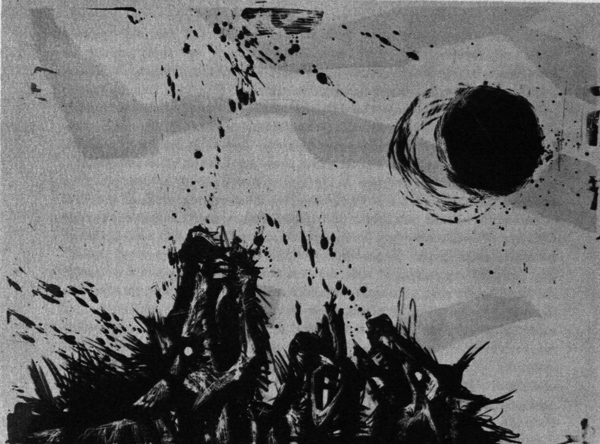
DARK IS THE EARTH, SO IS
THE SKY color litho 16y2"x22" 1957
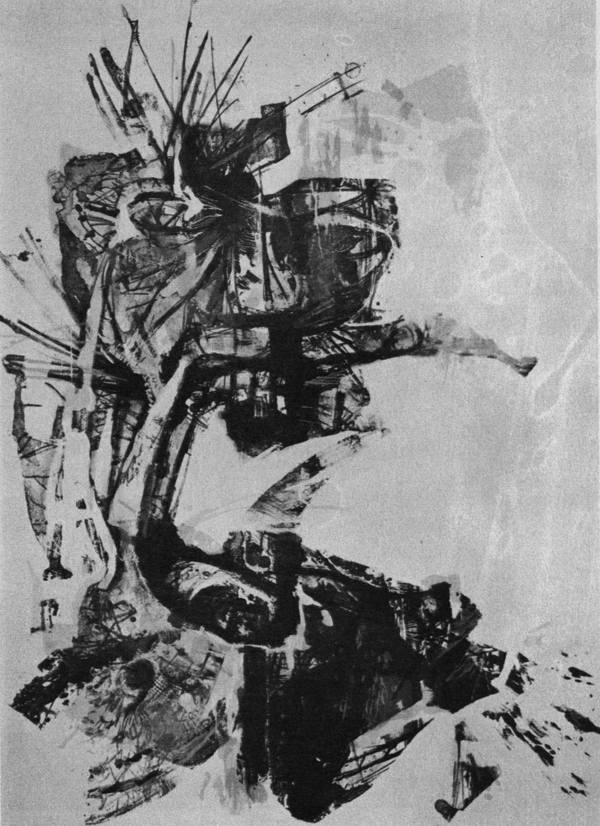
PASO DOBLE from TORO DESCONOCIDO series color litho 27"xl9" 1960
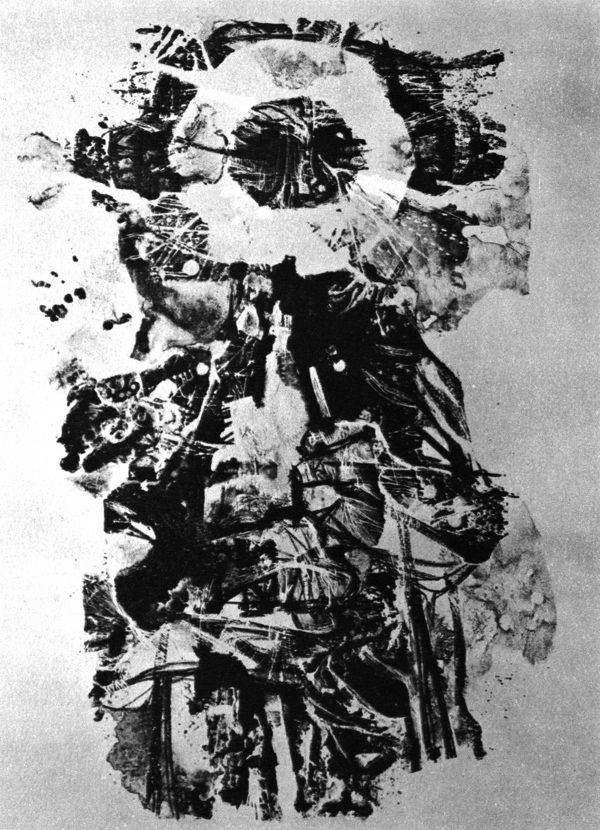
TRAJE DE LUCES color litho 30"x21-l/2" 1960
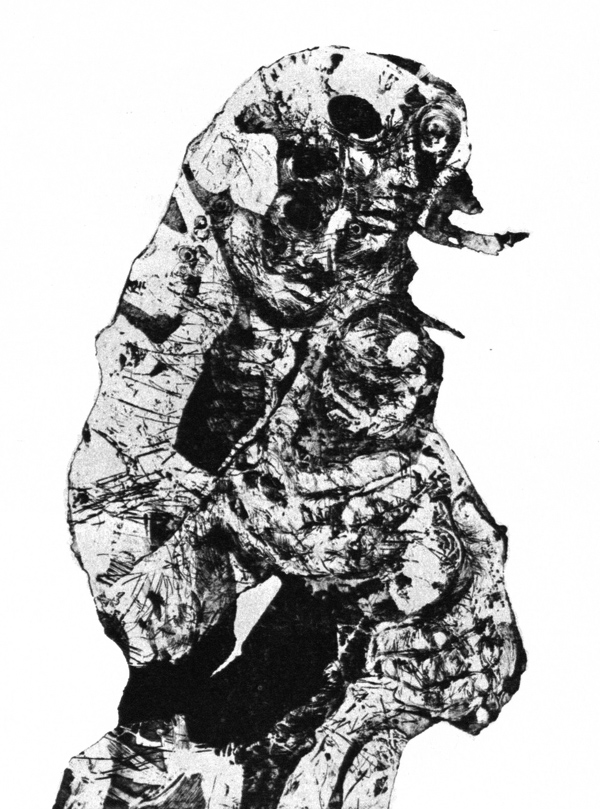
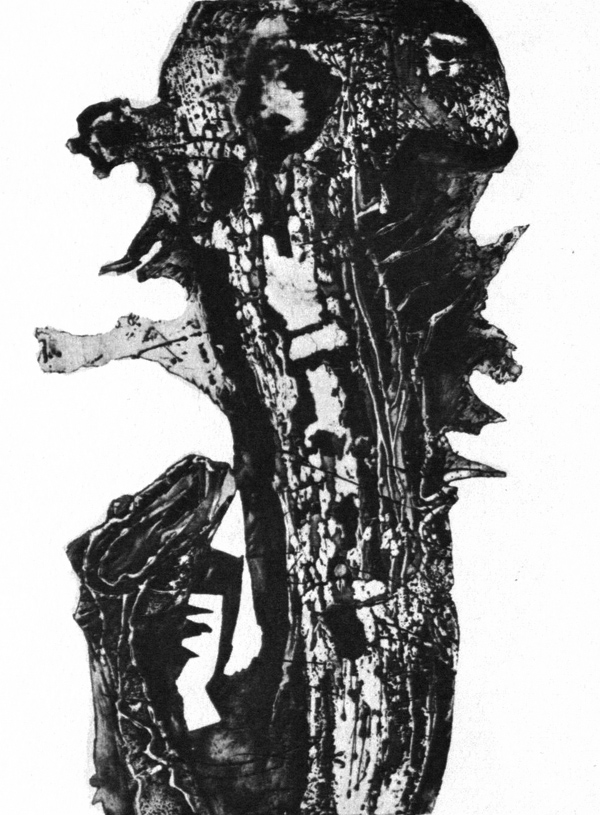
LE SERPENT QUI DANSE intaglio 23"x14" 1961
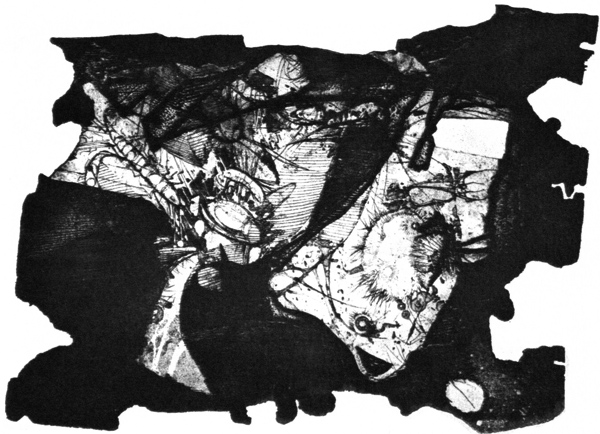
IT'S BETTER NOT etching 13-1/2"x19" 1961
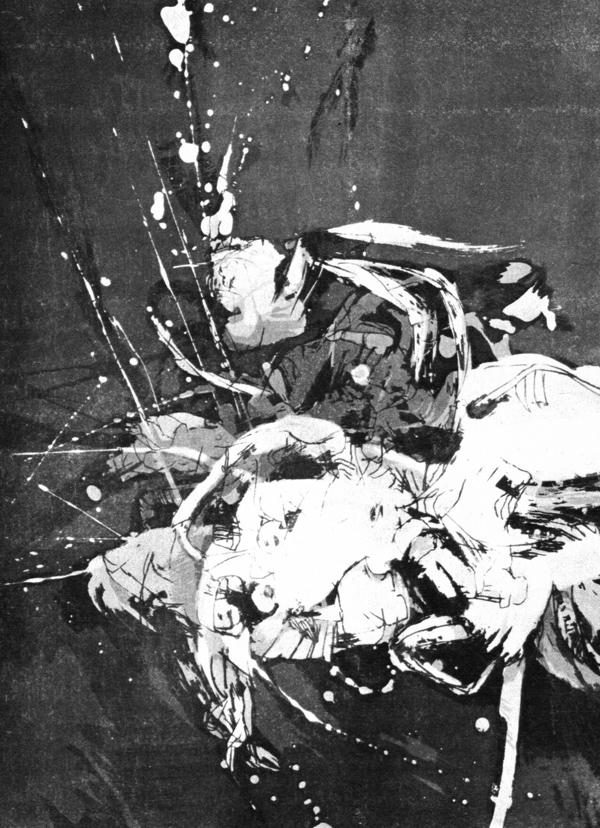
CHE from HEW series color litho 26-1/2"xl9-1/2" 1962
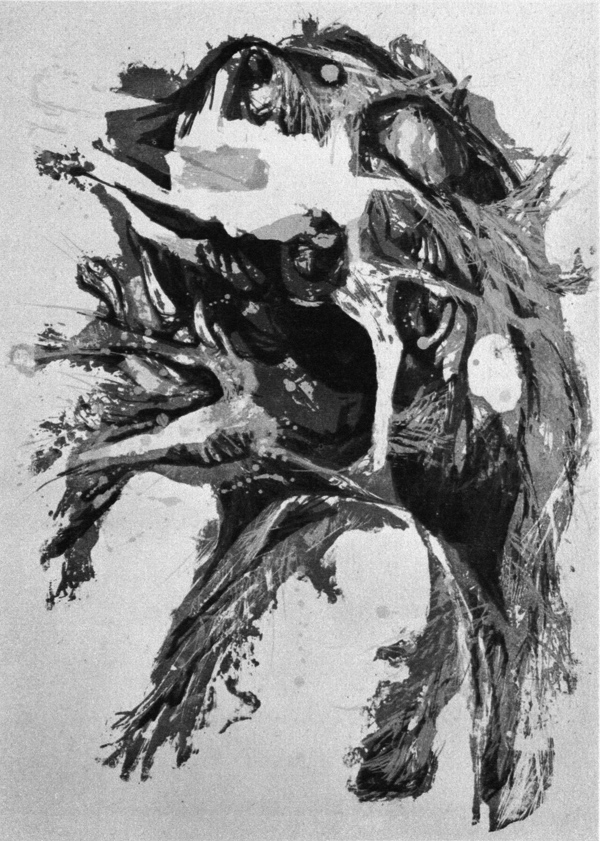
THERE from HEW series color litho 20-1/2"x30" 1963
